
Crab-like spiny orb spider (Gasteracantha cancriformis), Matheson Hammock State Park. |
Florida, part 28: Other Arthropods
Probably because of its immense clouds of mosquitoes and flies, Florida is blessed with great numbers of spiders, ranging in size from tiny, colorful and smart jumping spiders to huge orb spiders.
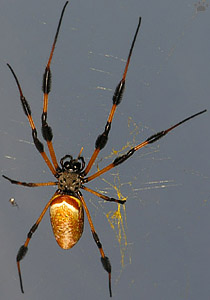 |
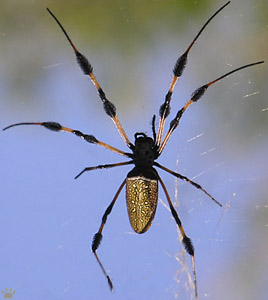 |
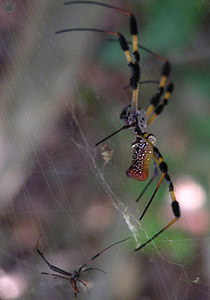 |
| Golden-silk spiders (Nephila clavipes), MHNP. Note the dwarf male on the right photo. |
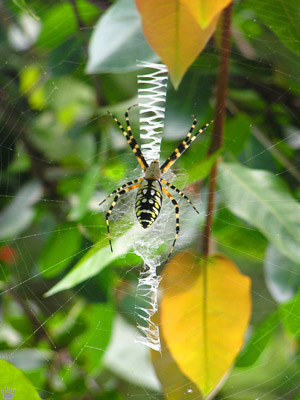
Black-and-yellow garden spider (Agriope aurantia), Smyrna Dunes Park. |
Golden- silk spider (above) is the largest native species. Its webs sometimes span two-lane highways. Countless webs make it difficult to walk forest trails at night, but once I saw a disturbed spider eat its huge web in less than twenty seconds. |

Web of Araneid spider, Everglades National Park. |
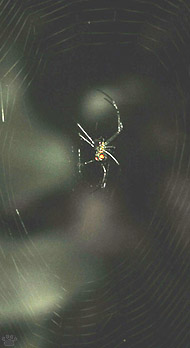
Orchard spider (Leucauge venusta), MHNP. |
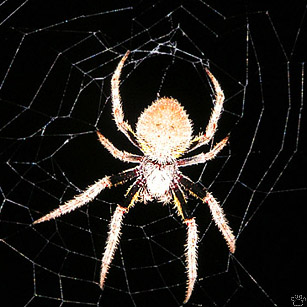
Rough orb spider (Neoscona hentzi), Highland Hammock State Park. |

Orchard spider, MHNP. |
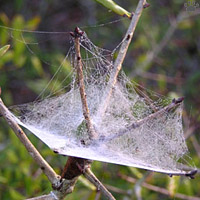
Web of Theridiid spider, Ocala National Forest. |
Spider webs can also be very diverse. |

Web of Araneid spider, HHSP. |
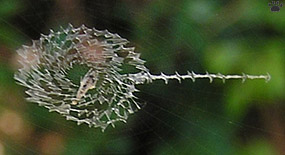 |
| Web of Araneid spider, ENP. |
| There are hundreds of designs. |

Coastal wolf spider (Arctosa littoralis), Caladesi Island State Park. |
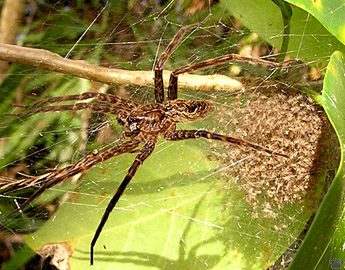
Florida wolf spider (Sossipus floridanus) with young, ENP. |
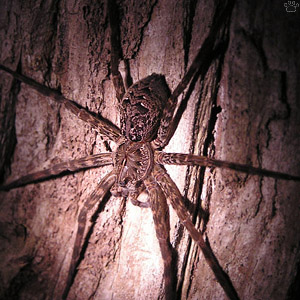
Biting wolf spider (Hogna lenta), Fakahatchee Strand State Preserve. |
Many spiders don't make webs at all. Eyes of these night hunters shine in the grass, bushes, tree crowns - anywhere you point your flashlight. |
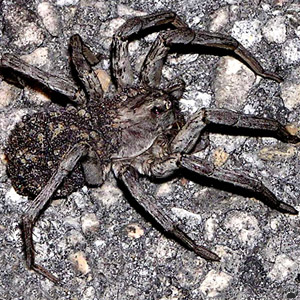
Coastal wolf spider with young, Big Cypress National Preserve. |
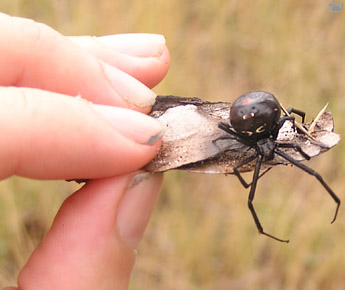 |
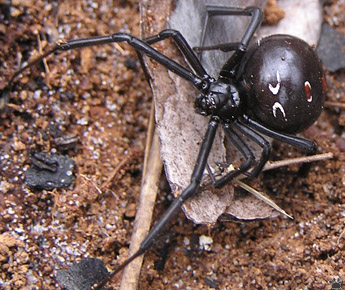 |
| Southern black widow (Latrodectus mactans), Timucuan Ecological and Historic Preserve. |
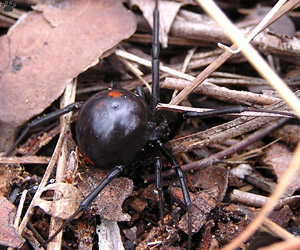
Southern black widow, TEHP. |
Southern black widow is the most venomous local spider. It's not aggressive, but a few people die from accidental bites each year. |
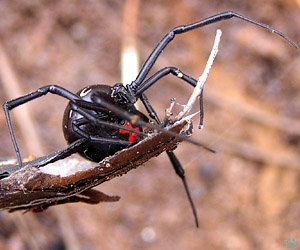
Southern black widow, TEHP. |
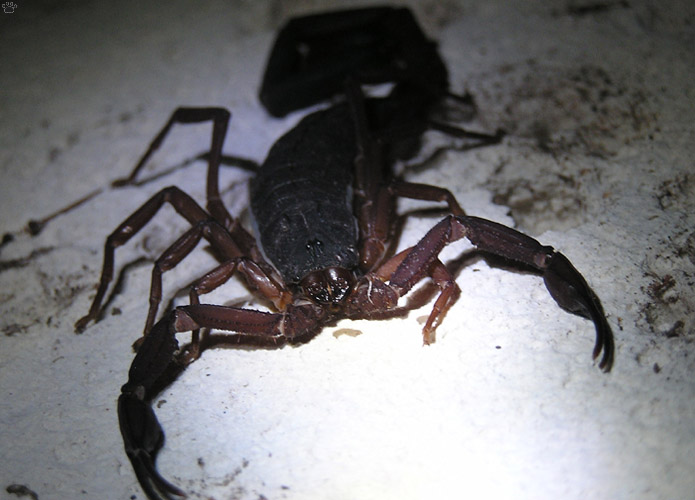
Florida bark scorpion (Centruroides gracilis), Silver Palm. |
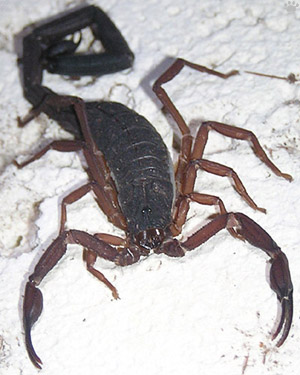
Florida bark scorpion, SP. |
Florida scorpions are large and scary- looking. Their bites are extremely painful, but not life- threatening. They are most common in dry forests, but also occur in city suburbs. |
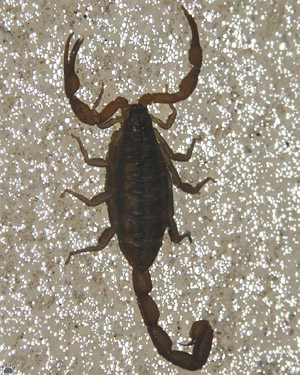
Hentz' bark scorpion (C. hentzi), Okeefenokee Swamp. |
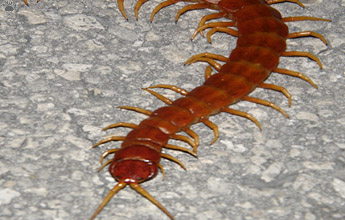
Caribbean giant centipede (Scolopendra alternans), No Name Key. |
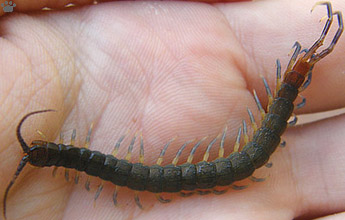
Florida blue centipede (Hemiscolopendra marginata), Coral Gables. |
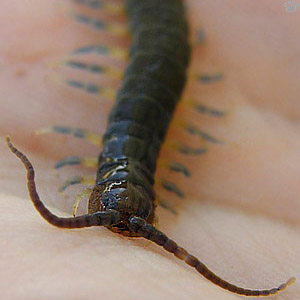
Florida blue centipede, CG. |
This Florida blue centipede crawled out of my bathroom sink one morning. It didn't try to bite while handled. The much larger Caribbean centipede is more feisty, and have painful bites. It is said to be an introduced species, but I suspect that it is native to the Keys. |
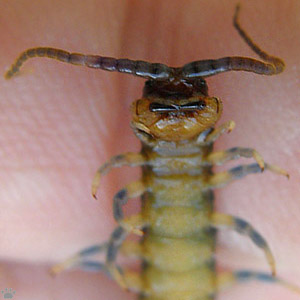
Florida blue centipede, CG. |
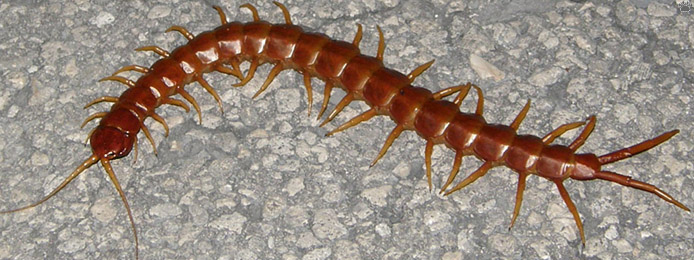
Caribbean giant centipede, Key Deer National Wildlife Refuge, No Name Key. |

Florida ivory millipede (Chicobolus spinigerus), ENP. |
Millipedes are much more common.

Common millipede,
CCSP. |
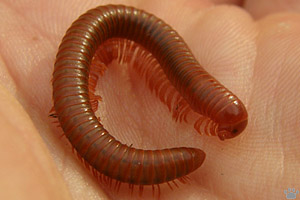
Common millipede (Narceus americanus), Cayo Costa State Park. |
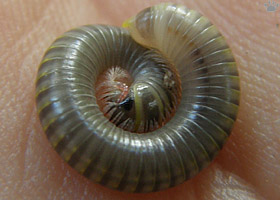
Common millipede, CG. |
Unlike centipedes, millipedes of Florida are completely harmless, although some might be poisonous to eat (no, I've never tried). |
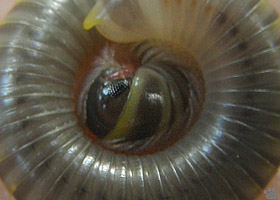
Common millipede, CG. |
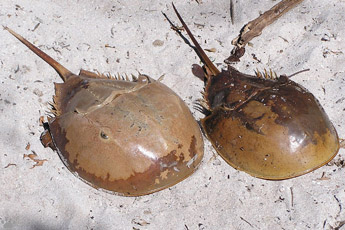 |
 |
| American horseshoe crabs (Limulus polyphemus), MHSP. |
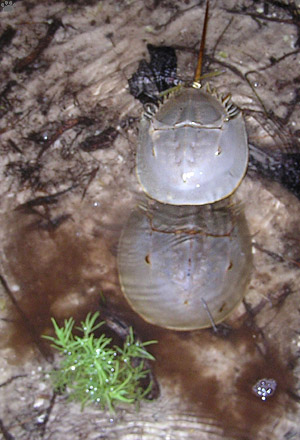
Female horseshoe crab releasing eggs during mating, MHSP. |
Horseshoe crabs are not really crabs - they are related to long- extinct arthropods called trilobites. They come from the sea to the beaches in spring, usually on the nights of high tides, to spawn. Watching their mating antics is always interesting. |
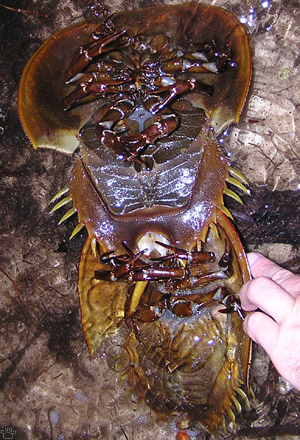
Sometimes horny horseshoe crabs flip over during mating. MHSP. |

Spotted spiny lobster (Panilurus guttatus), Biscayne National Park. |
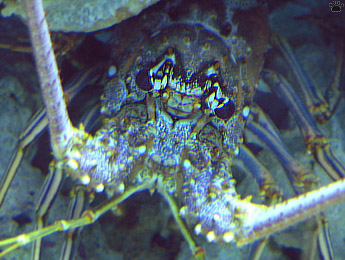
Caribbean spiny lobster (P. argus), Dry Tortugas National Park. |
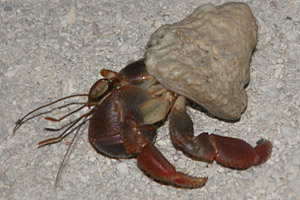
Land hermit crab (Coenobyta clypeatus) in a shell of American
top snail (Astraea american), DTNP. |
Lobsters are the largest crustaceans in Florida. They are still relatively common, especially in protected waters of the Dry Tortugas. |
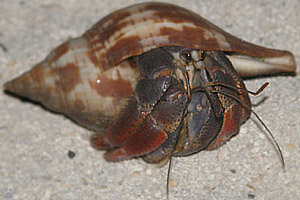
Land hermit crab in a shell of true tulip snail (Fasciolaria tulipa),
DTNP. |
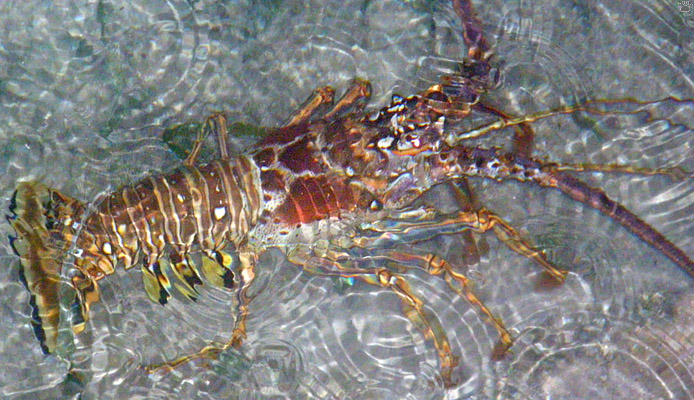
Giant specimen of Caribbean spiny lobster, DTNP. |
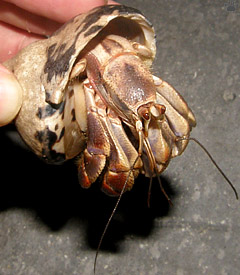
Land hermit crab in a shell of West Indian top snail
(Cittarium pica), DTNP. |
The Dry Tortugas are also the best place to see land hermit crabs. |

Land hermit crab in a shell of West Indian top snail,
DTNP. |
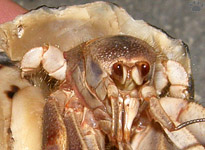 |
| Land hermit crab, DTNP. |
| These funny creatures will steal your lunch if you leave it unattended. |
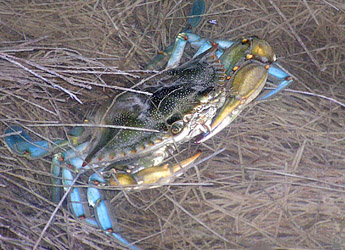 |
 |
| Blue crabs (Callinectes sapidus), ENP. |
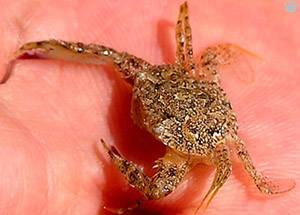
Mud crab (Sesarma sp.), Arsenicker Park. |
Numerous crabs inhabit seas, lakes, and even coastal lands of Florida. Their ability to adapt without changing much is really impressive. |
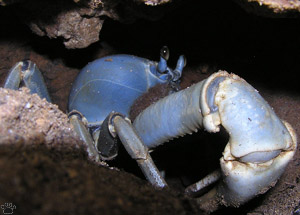
Blue land crab (Cardisoma guanhumi) in its burrow, MHSP. |

Banded coral shrimp (Stenopus hispidus), DTNP. |

Mudflat fiddler crab (Uca rapax), MHSP. |
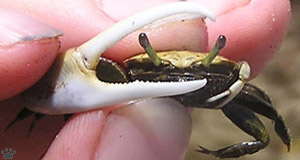
Atlantic mangrove fiddler crab (Uca thayeri), MHSP. |
Millions of fiddler crabs live in the mudflats. Their huge claws are used for signaling each other. |

Atlantic mangrove fiddler crab, MHSP. |

Yellow arrowcrab (Stenorhynchus seticornis), DTNP. |
Part 29. Mollusks
Back to Part 27
Home
|